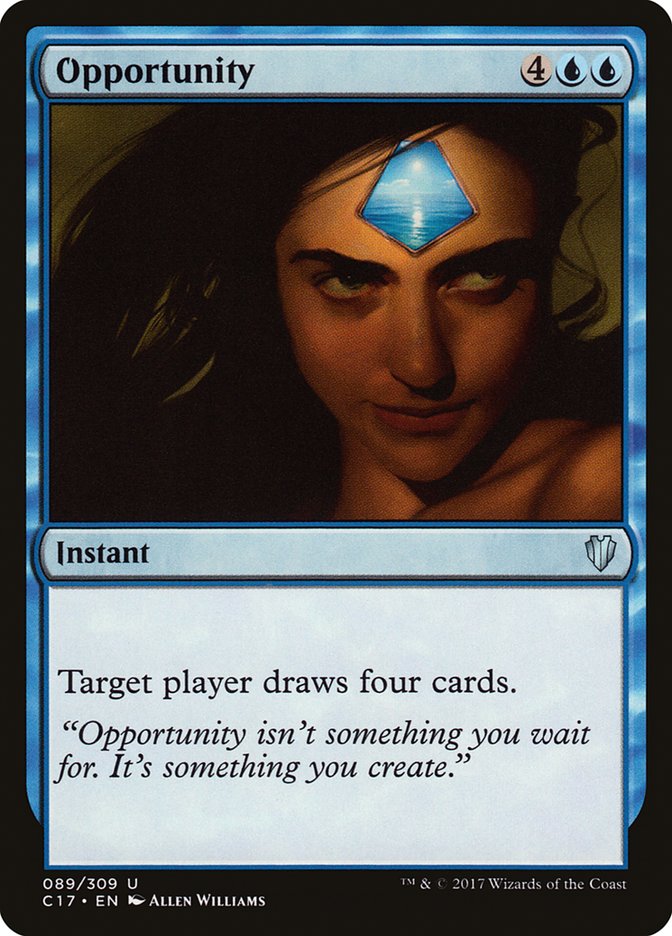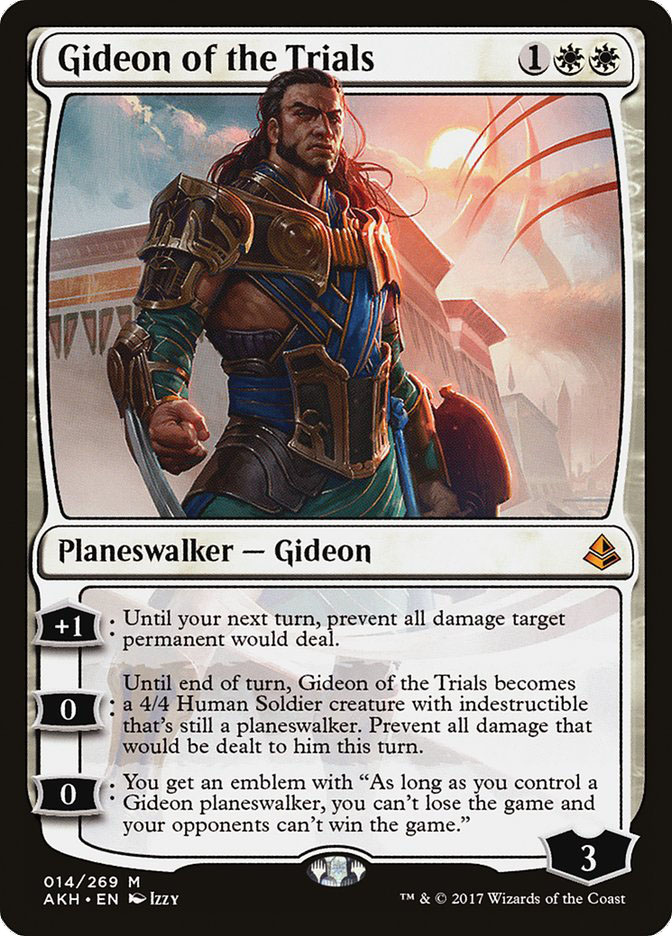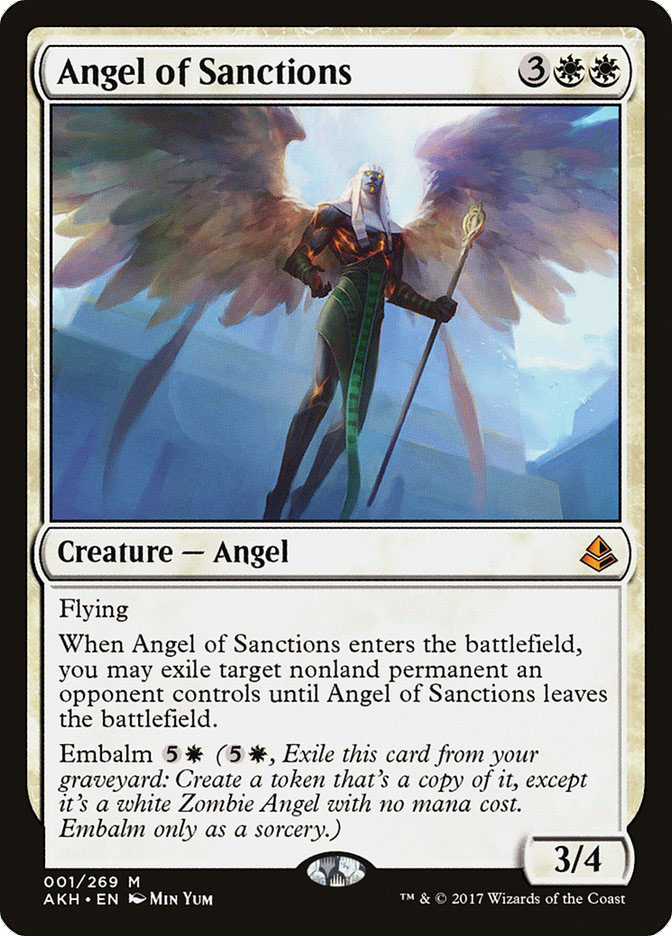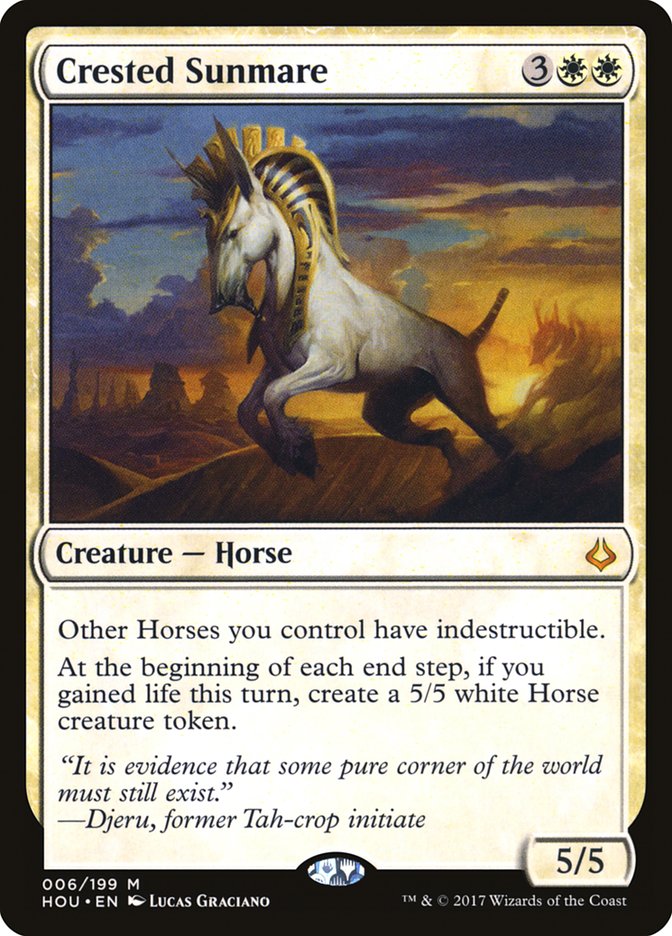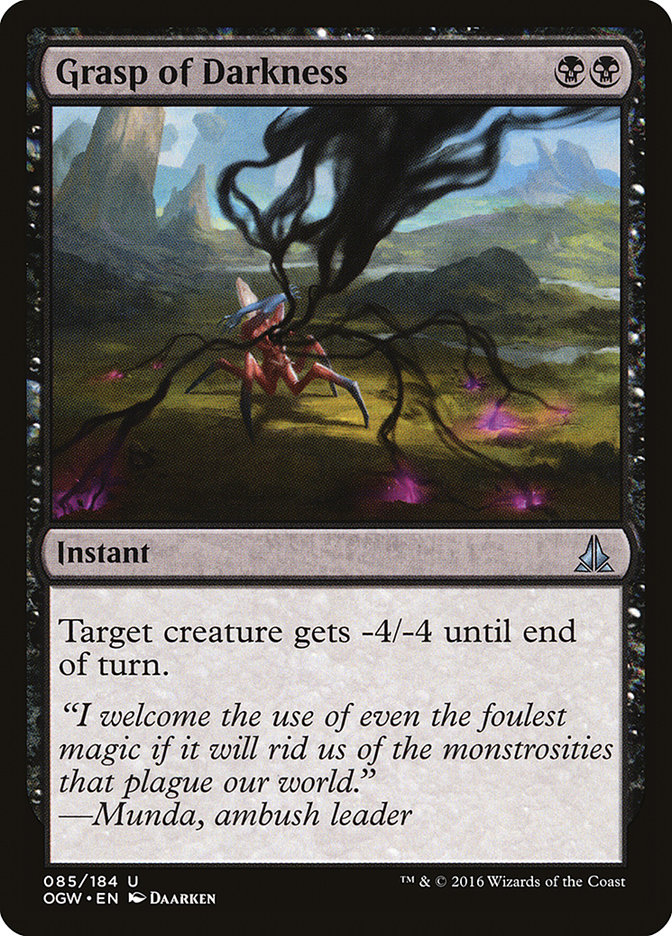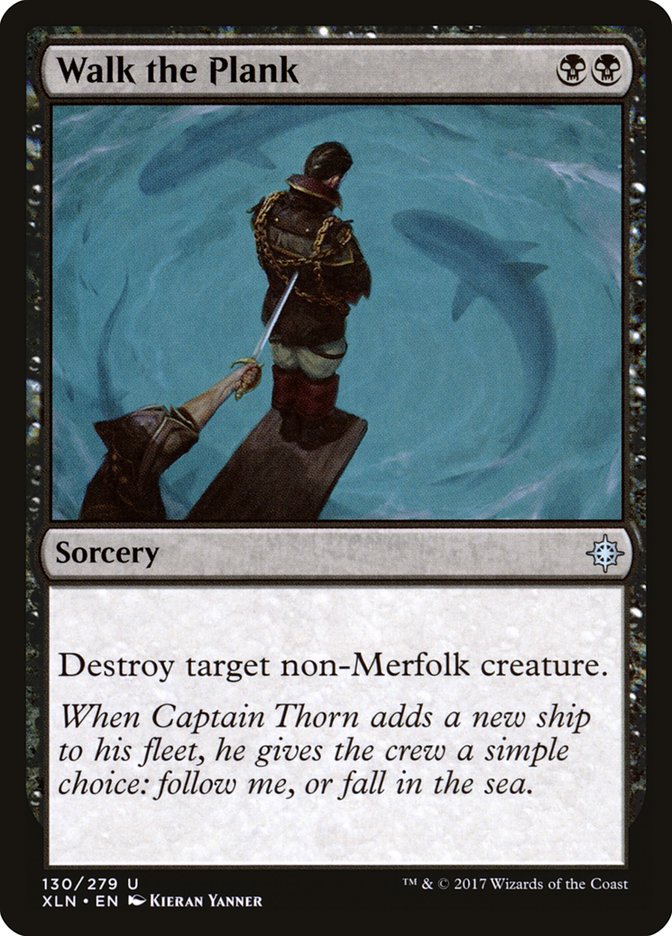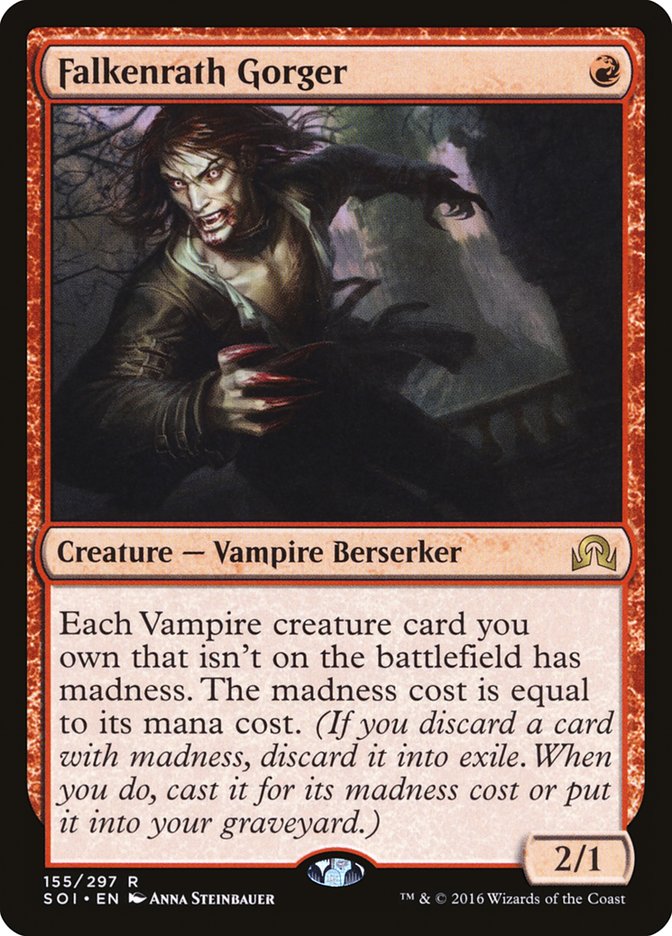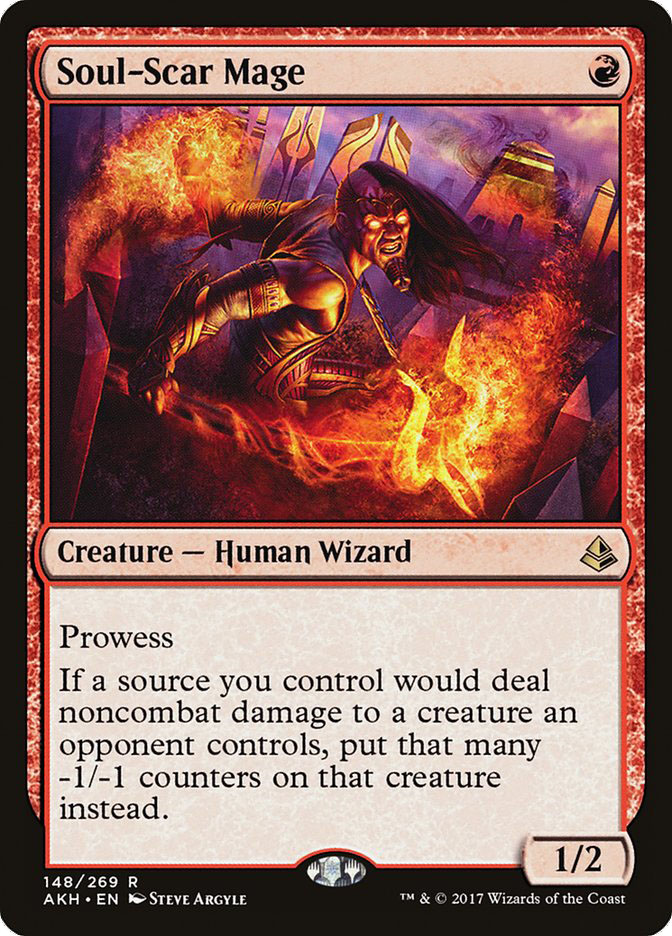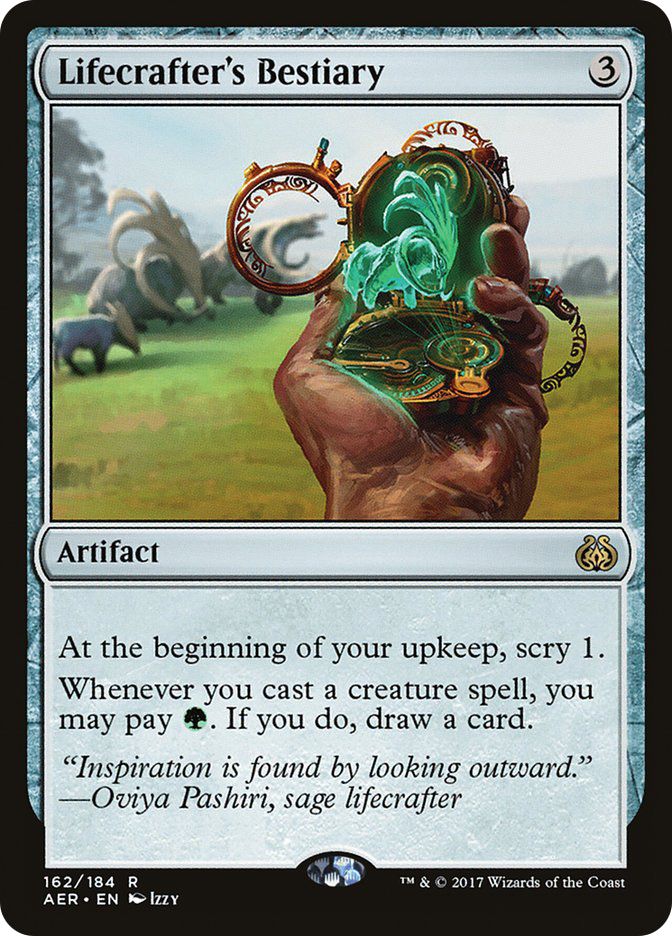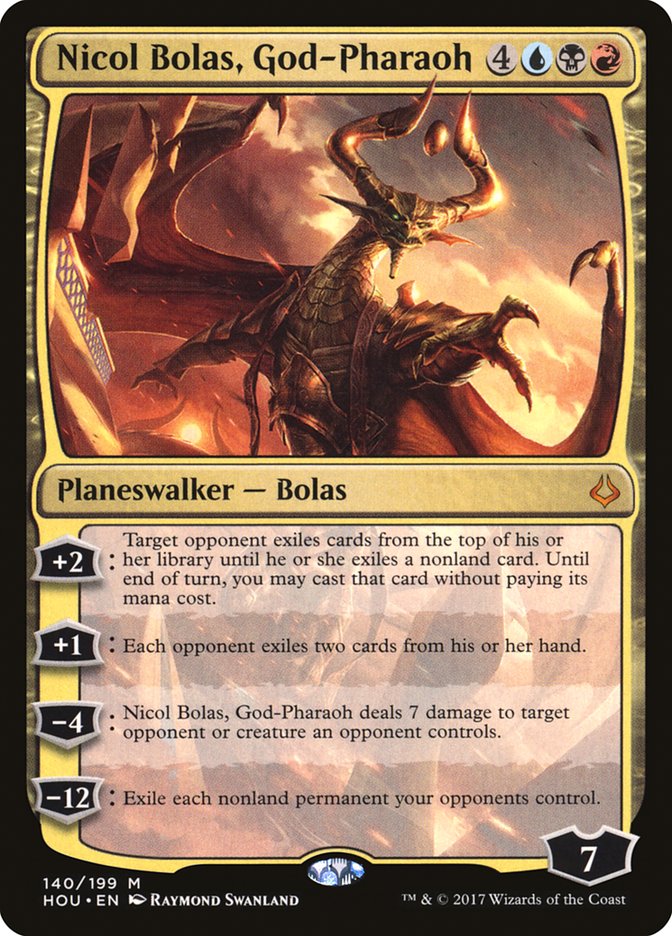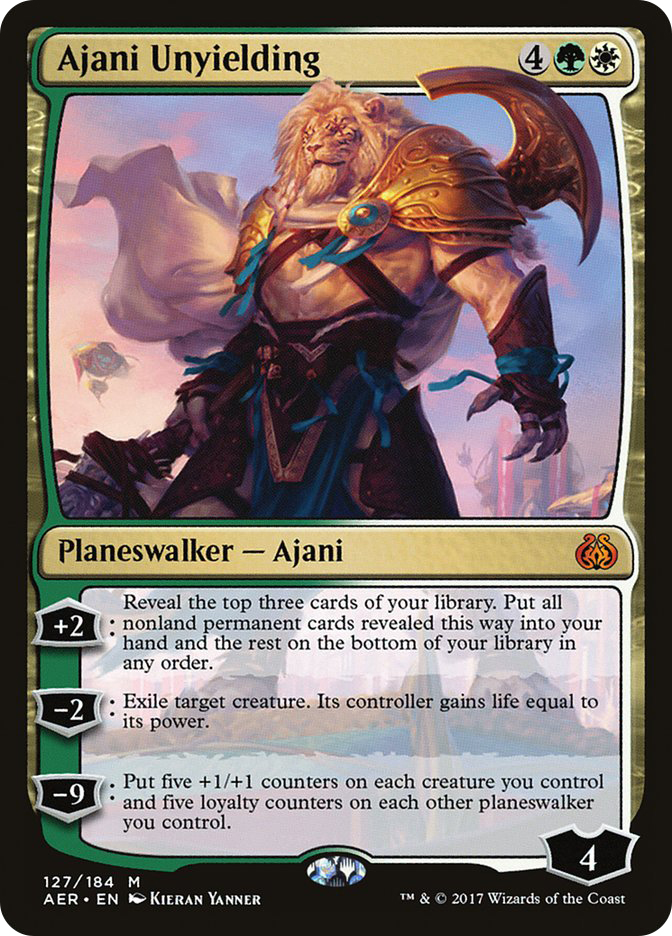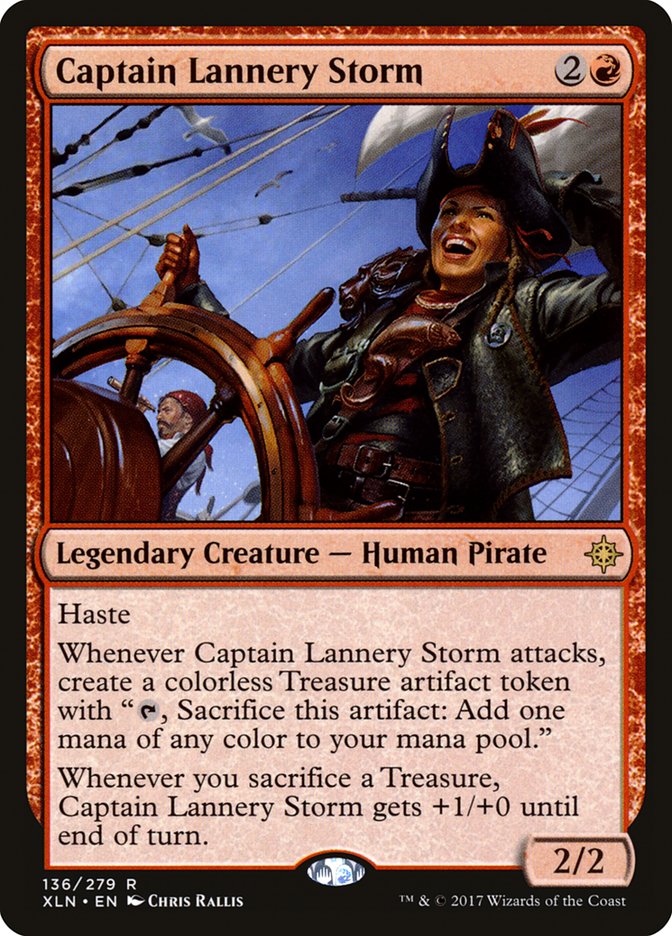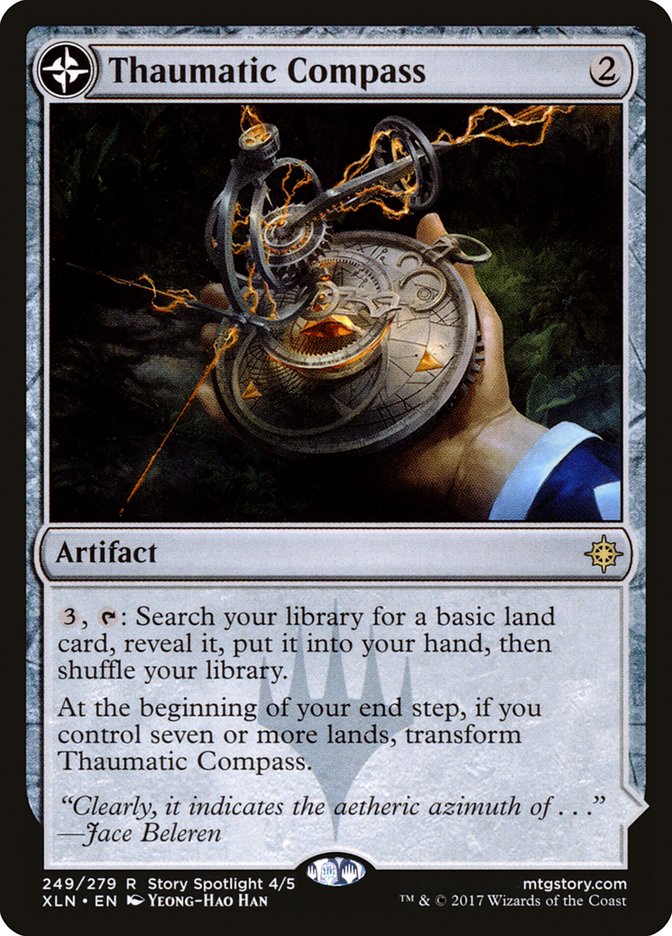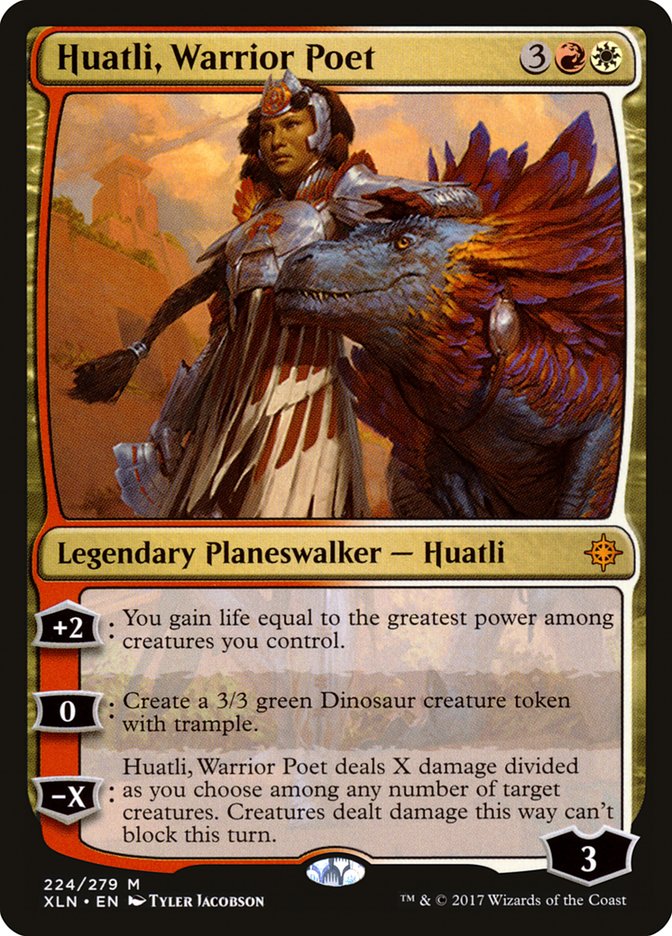
This is Tevin Coleman.
To most people, Tevin Coleman isn’t a very important football player. Sure,
he was a third-round draft pick in 2015 and had a nice handful of
touchdowns last year, but he is firmly the backup for star running back
Devonta Freeman. While the Super Bowl finalist Atlanta Falcons have one of
the most powerful offenses in the sport, Coleman exists in the dubious
situation of being stuck behind a Tier 1 running back. As such, he is not
going to see the field often enough to put up any truly impressive numbers.
So why are we talking about a backup running back? Isn’t our goal here to
prepare to win matches of Ixalan Standard, not win our fantasy
football league? (Why not both!)
Because in Fantasy Football, like in Magic, evaluation is defined by
context and opportunity.
Tevin Coleman is considered a top-notch “handcuff” in fantasy football.
Because of his talent level and the monumental value of being the starting
running back for the Atlanta Falcons, Coleman is a player who could find
himself extremely valuable in the blink of an eye. If anything happens to
Devonta Freeman, whether injury or just underperformance, Coleman could
easily become one of the best running backs available. As such, Freeman
owners would often be wise to draft Coleman as well – to “handcuff” them
together as an insurance policy. Coleman also represents a wonderful
low-cost investment for any team owner looking for a low-risk, high-payoff
player they can draft in the later rounds.
Magic operates in largely the same way, except of course that cards don’t
get injured— they rotate.
No matter how good Counterspell is, as long as Mana Drain is legal, it is
doubtful to see play.
Lightning Bolt / Lightning Strike, Sakura Tribe-Elder / Rampant Growth,
Tundra / Glacial Fortress… the list goes on and on. A card can be
fantastic, but if it is stuck behind another legal card that does the same
thing but better, it’s not going to see much play. Of course, that doesn’t
mean that Lightning Strike, Rampant Growth, and Glacial Fortress are bad
cards! It just means that they need to be the best available to
have an opportunity to shine.
In my
last article
, we looked over cards that will be rotating, and this week we are going to
look for their replacements.
The Starter: Gideon, Ally of Zendikar
Of course, we start with the highest-profile exit from Standard, Gideon,
Ally of Zendikar. Gideon has been ending games in a hurry and making life
hell for control players for what feels like ages, and now he is finally
about to be gone from Standard forever.
Good in most sorts of aggressive or midrange decks, Gideon leaves a hole in
the noncreature threat slot in many decks. Part of what made Gideon so
powerful is that he was very difficult to answer effectively. Most decks
would be on the back foot already, which made attacking him difficult; most
direct removal wouldn’t hit him; and then, even if you were able to use a
card like Never or Cast Out, your opponent still had a very relevant 2/2
token left over.
The Handcuffs: Gideon of the Trials; Chandra, Torch of Defiance
Gideon of the Trials has always stood in the shadow of Gideon, Ally of
Zendikar, as almost any deck wanting to play the former would do so in
place of the latter. In a somewhat odd twist of fate, the “planeswalker
uniqueness rule” that made playing multiple versions of the same
planeswalker difficult has
just been changed for Ixalan
, so we will never really know what the format would have been like with
both Gideons able to exist side-by-side.
Regardless, Gideon of the Trials stands in as a sticky noncreature threat
for any aggressively slanted white deck. Gideon affects the battlefield,
smashes for four, and is surprisingly difficult to kill with the exit of
Grasp of Darkness from the format. Gideon also plays very well with Heart
of Kiran, other planeswalkers, and mass removal spells, and has a lot of
untapped potential.
Chandra, Torch of Defiance is the other somewhat obvious Gideon, Ally of
Zendikar stand-in, as it provides an aggressively slanted noncreature
threat that can provide power and late-game reach to any aggressive or
midrange deck. If Mardu Vehicles is going to survive rotation in some way,
it should be in large part to both Gideon and Chandra.
The Starter: Archangel Avacyn
Archangel Avacyn was once the queen of Standard, a fact everyone was
reminded of last weekend with the reemergence of Mono-White Eldrazi.
Creatures (26)
- 3 Eldrazi Displacer
- 4 Thought-Knot Seer
- 4 Matter Reshaper
- 4 Archangel Avacyn
- 4 Thraben Inspector
- 3 Selfless Spirit
- 4 Walking Ballista
Lands (25)
Spells (9)

Archangel Avacyn is frankly one of the most powerful five-drops we’ve seen
in years, and her presence alone stifled almost every other big white
creature from seeing play. Like we see with Glorybringer in red currently,
why play any other five-drop when you can just play Avacyn? She played
offense, played defense, and created card advantage in multiple different
ways – that’s hard to replace.
The Handcuffs: Angel of Sanctions, Crested Sunmare
Replacing Archangel Avacyn is almost impossible. She provides a unique
level of power and flexibility not normally seen on expensive creatures.
Still, someone has to step up, and Angel of Sanctions brings to the table a
level of flexibility and card advantage to the table that most cards can’t.
With the ability to answer any permanent an opponent can muster, as well as
the card advantage of being able to embalm it on-curve if it dies, Angel of
Sanctions is probably the white five-drop with the most raw power left in
the format.
Crested Sunmare is a different kind of five-drop, but its synergy with
Crypt of the Eternals is undeniable. Unlike Archangel Avacyn, Crested
Sunmare can’t just be played in any deck, but in a deck looking for a
payoff, it provides a very high one. Just getting two 5/5s for five mana is
already a great deal, and Crested Sunmare is able to be a lot more than
that. Five toughness is also a very important size in a format heavily
populated with copies of Glorybringer and Chandra, Torch of Defiance.
Neither option is fantastic, which may leave white decks looking to other
colors for their finishers.
The Starter: Grasp of Darkness
Grasp of Darkness may not be as flashy as a planeswalker or mythic rare
Angel, but it is one of the most important removal spells in the format.
This is only a short list of the top-notch mana-intensive cards that Grasp
of Darkness could deal with at instant speed for only two mana, on top of
being able to kill all the cheap creatures that other removal can kill as
well. While some of these cards are rotating, Glorybringer, Verdurous
Gearhulk, and especially Hazoret the Fervent remain, which are all very
good against removal spells in their own way.
Grasp of Darkness was the clean answer to these cards, and once it leaves
the format, it leaves a gaping hole that must be filled.
The Handcuff: Walk the Plank
Walk the Plank is a very cool, flavorful removal spell, but it pales in
comparison to Grasp of Darkness.
Being an instant is normally a fairly large upgrade over being a sorcery
and usually classifies how a removal spell is used; instant-speed removal
spells are better in reactive decks because they are often cast on
attacking creatures, while sorcery-speed removal spells are better in
aggressive decks, as they are usually used on potential defending
creatures.
However, when viewed in the context of cards like Glorybringer and other
hasted or interaction-resistant creatures, having removal that is
instant-speed becomes even more of a priority. Killing a Glorybringer after
it has already exerted to kill one of your creatures and bashed you for
four does not feel good. Sorcery-speed removal can also never touch things
like Vehicles and planeswalkers that aren’t creatures on your turn. This
Standard format is one of the most hostile to sorcery-speed removal ever,
which makes good instant-speed removal very important.
With Walk the Plank already previewed, it feels unlikely that there will be
another good two-mana removal spell in Ixalan, which means we are
going to have to rely on a mixture of cheap removal like Fatal Push in
conjunction with more expensive spells like Vraska’s Contempt to answer the
wide variety of threats in Standard.
The Starter: Falkenrath Gorger
Ah, yes, the humble Falkenrath Gorger.
Falkenrath Gorger spent much of its time in Standard completely unplayable,
as red decks never really had to tools to compete with a million two-mana
2/3s and Thraben Inspector. However, with Ramunap Red finally coming to the
forefront with new additions from Hour of Devastation, the deck
has been Tier 1 ever since. As such, while a mostly vanilla red Savannah
Lion doesn’t sound too impressive, it sure does the job in lieu of
other options.
I mean… some of the current red decks play Village Messenger, and despite
what Cedric Phillips thinks, that card sucks!
The truth, is sometimes you just need a solid one-drop that can lay some
early beatdowns, and Falkenrath Gorger fits the bill. Or, should I say, used to fit the bill.
The Handcuff: Soul-Scar Mage
When it comes to hyper-aggressive red decks, one-mana creatures are
unbelievably important. This is why a card like Village Messenger can
sometimes show up in tournament-winning decklists. When the upcoming
Standard rotation happens, both Falkenrath Gorger and Village Messenger are
leaving us, leaving Bomat Courier as the only remaining one-drop. Soul-Scar
Mage is not as good in a straight Mono-Red Aggro strategy as it is in some
sort of “spells matter” deck, but it immediately slots into Mono-Red as the
only other realistic option. There is also the chance that we pick up a new
red one-drop in Ixalan, but even without one, Ramunap Red should
maintain its place as one of the best decks in the format.
Soul-Scar Mage also has better days ahead of it— the card is criminally
underplayed in general.
The Starter: Tireless Tracker
Ah, yes, “the best card ever printed.”
For a while now we’ve been in the unfamiliar position of green being the
best card advantage color rather than blue, and this is due in large part
to Tireless Tracker. Tireless Tracker has been a dominating force since its
Week 1 victory at SCG Baltimore
in the hands of a dashingly handsome Magic player. Sometimes a maindeck
fixture, sometimes a sideboard plan, Tireless Tracker has been everywhere.
Now it’s time to move on however, and with cards like Duskwatch Recruiter;
Nissa, Vastwood Seer; and Den Protector all now gone as well, green no
longer has the best card advantage engines in Standard.
The Handcuffs: Vizier of the Menagerie, Lifecrafter’s Bestiary
There’s no easy way to say it… Tireless Tracker going down is a serious
loss for any grindy green deck’s chances at making the playoffs this year.
Cards like Vizier of the Menagerie or Lifecrafter’s Bestiary can offer
fairly inefficient card advantage, but the truth is that green decks are
not going to be able to effortlessly grind into the late-game anymore.
Barring help from other colors, green is going to have to go back to either
beating down with monsters or ramping into threats to be effective.
Green can also look to other colors for sources of beatdown or card
advantage, as cards like Glorybringer or planeswalkers are proactive tools
that can help keep the cards flowing.
The Starter: Ulamog, the Ceaseless Hunger
How does one replace one of the biggest and baddest threats ever printed?
Ulamog, the Ceaseless Hunger has been singlehandedly winning games of Magic
since its inception, fundamentally altering how mana ramp decks have
functioned in Standard. Rather than trying to get to six or seven mana to
cast a game-breaking creature, Ulamog asks for an unheard-of ten mana.
Thankfully, getting to six or seven mana is much easier.
The Handcuffs: Gishath, Sun’s Avatar; Nicol Bolas, God-Pharaoh; Ajani
Unyielding
Dinosaurs!
Planeswalkers!
No more stupid Eldrazi!
If you want to ramp into something sweet, now we’ve got some choices to
make!
The new huge Dinosaur mythics from Ixalan are not a bad place to
start, with Wakening Sun’s Avatar providing a monumental effect and huge
body for a bargain eight mana (compared to Ulamog’s ten). Gishath, Sun’s
Avatar requires a little more work, but it seems clear that Wizards wants
Dinosaurs to see play in Constructed in some way. Whether that’s in some
sort of ramp deck or some sort of G/R Monsters deck with cards like
Regisaur Alpha remains to be seen.
There are also huge and powerful planeswalkers like Nicol Bolas,
God-Pharaoh and Ajani Unyielding. Nicol Bolas needs no real introduction,
but I’ll bet you didn’t even remember that Ajani Unyielding was a legal
Standard card! Without Ulamog, the Ceaseless Hunger being the ultimate
end-game in the format, many other big spells are going to get a chance to
shine.
With less than half of Ixalan previewed and a whopping four sets
leaving the Standard format, we still have many holes to fill. Being able
to identify the cards that will step up and fill in these gaps quickly is a
very important skill when it comes to post-rotation Standard evaluation.
Even if you are just looking to brew brand new decks and not just update
old ones, it’s very important to have a good idea of what the top decks are
going to look like. Without knowing what you’re trying to beat, it’s hard
to build a competitive deck.
I for one can’t wait until the full set is in our hands, as I have a number
of ideas – both new and old – that around bouncing around that I’m dying to
try!
Flippin for Griselbrandz FFL 2017
If it wasn’t obvious I’ve got football on my mind, and that’s because it’s
time for the fourth season of the Flippin for Griselbrandz Fantasy Football
league! It’s a twenty-team, .5 PPR league run and populated by Magic
players, with a ton of names you may recognize.
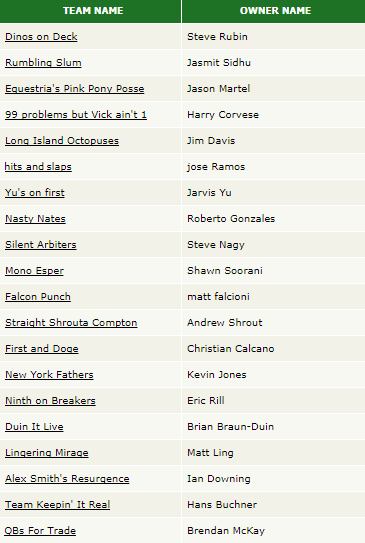
In our first three years I’ve come in 8th, 2nd, and 13th, and this year I’m
looking to take it all down! I’ll be giving periodic updates on my Twitter, so watch me
rough up some Magic ringers in fantasy football all year!
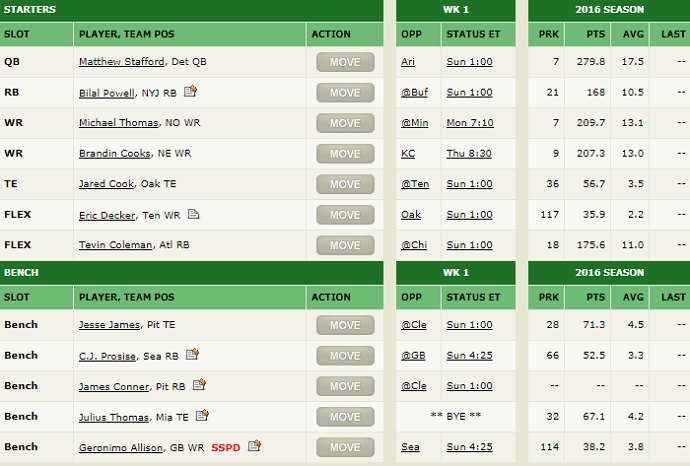
How’d I do?


